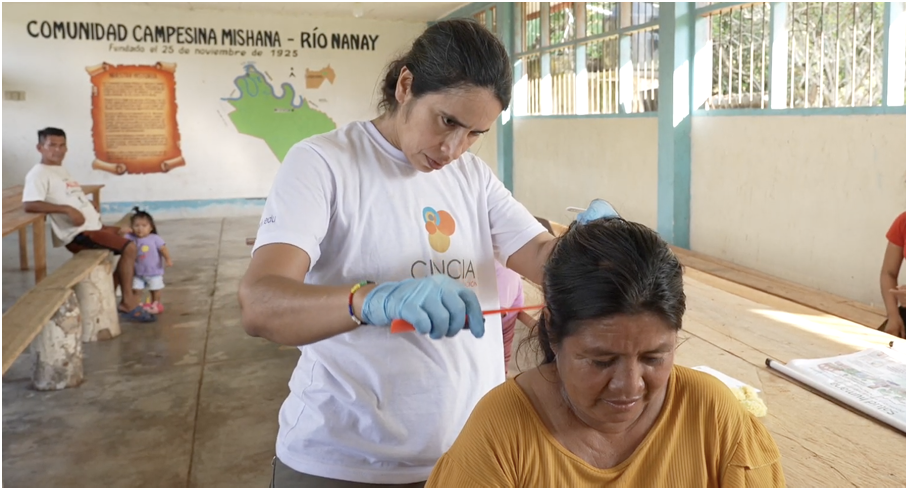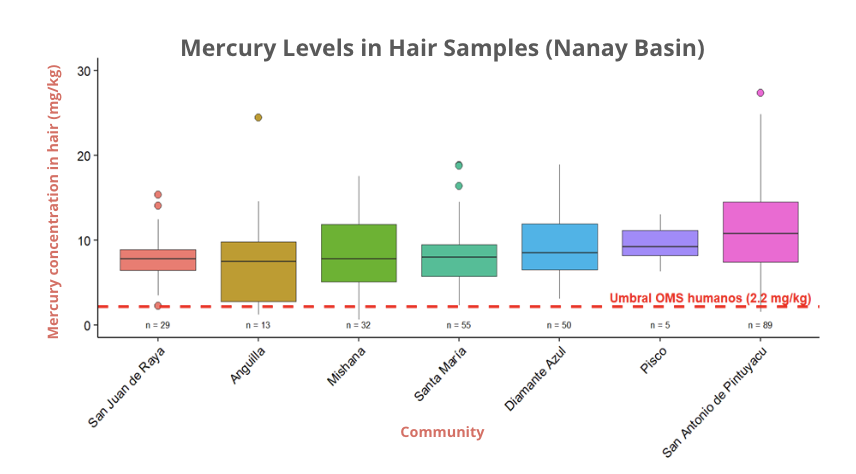Testing reveals chronic mercury exposure across Peru’s Loreto region
Climbing gold prices may mean climbing mercury poisoning rates for the people living in the Peruvian Amazon.
According to a June report from our colleagues at CINCIA, widespread mercury exposure has been identified in several communities living in Peru’s Loreto region. The findings emerged following hair sample testing conducted late last year of 273 men, women, and children across six communities found along the Nanay and Pintuyacu rivers in the Peruvian Amazon.

Alarming Results
Nearly 80% of villagers tested had mercury levels far above the 2.2 milligrams per kilogram (mg/kg) safety threshold established by the World Health Organization, while only a handful of individuals tested below the limit. The median level across communities was 8.41 mg/kg: nearly four times the human limit.

While the source of the mercury is still being studied, the findings establish a critical baseline for mercury exposure in this region—where communities are highly reliant on fish, especially large carnivorous species that bioaccumulate mercury. CINCIA Executive Director and Sabin Center Senior Fellow Luis Fernandez warns that if illegal mining reaches this region, it could dramatically worsen mercury exposure—particularly in communities that already consume large quantities of fish. In that event, villagers may approach the most severe levels of mercury poisoning, which can result in birth deformities and neurological disabilities. CINCIA’s Mercury Program lead and Claudia Vega explains that the greatest risk is for pregnant women and children, as methylmercury can cross the placenta and affect fetal brain development:
This type of exposure is a serious public health concern, even if affected individuals do not show immediate symptoms.
Exposure rates are already troubling among these vulnerable populations, with 45% of children and 37% of women of reproductive age testing at levels associated with high health risks.
Communities Demand Action
Citing this report, residents filed a complaint with the Andean Community, a regional political and economic bloc including Bolivia, Colombia, Ecuador, and Peru. Their complaint accuses Peru of failing to stop the illegal gold mining contaminating their water and food with toxic mercury, in violation of a 2012 binding regional policy to combat illegal mining.
The mercury is in our bodies now. We’ll have to live with this if the Peruvian state does nothing.
Jhonny Huaymacari Yuyarima, Ikito people
Jhonny Huaymacari Yuyarima, speaking to the Associated Press on behalf of the Ikito Indigenous people as well as an alliance of 33 Nanay basin communities, noted that his people had been fighting illegal mining for twenty years: “The mercury is in our bodies now. We’ll have to live with this if the Peruvian state does nothing.”
The gravity of this ongoing public health and environmental crisis has caught global attention, including coverage from CBC, the Associated Press, The Thomson-Reuters Foundation’s Context News, Australia’s Discovery Alert, and India-based Mint.
The report was developed in partnership with the Frankfurt Zoological Society Peru (FZS Perú) and the Foundation for Conservation and Sustainable Development (FCDS) with the support of the Gordon and Betty Moore Foundation.
Header image: FCDS Peru, via Context.com
